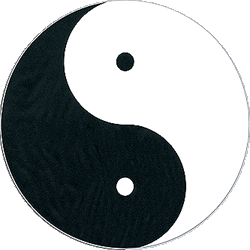
 Of course, Mathematics includes the fields of Logic, Number Theory, Set Theory, Analysis (and even the study of switching networks and computers, among many others), and we will have reason to consider most if not all of these parts of Mathematics. However, we will begin our exposition of the Syzygy with the properties of Relations, a basic mathematical idea. We will then consider two types of Boolean algebras: the Algebra of Subsets and the Algebra of Propositions. Finally, we will look at Group Theory. Of course, Mathematics includes the fields of Logic, Number Theory, Set Theory, Analysis (and even the study of switching networks and computers, among many others), and we will have reason to consider most if not all of these parts of Mathematics. However, we will begin our exposition of the Syzygy with the properties of Relations, a basic mathematical idea. We will then consider two types of Boolean algebras: the Algebra of Subsets and the Algebra of Propositions. Finally, we will look at Group Theory.
 We note that a relation is a correspondence between one thing and another. Given two sets, called the domain and the range, a relation is a correspondence between the objects of the domain and of the range. For example, when we count apples we set up a correspondence between the apples and the counting numbers. This is called a one-to-one correspondence, and it allows us to determine the number of apples. In large part, mathematics is the study of relations, and though the idea of a correspondence is simple, relations can become quite complex. One complex aspect of relations is their so-called the properties. Relations have three properties: 1) the Reflexive property, 2) the Symmetric property, and 3) the Transitive property. The first of these properties concerns the relation of an object to itself, while the last two concern the relation of an object to other objects. Consider, for instance, the numerical relation of equality: among numbers, some are equal to other numberss. For instance, the number 3 is the same as 9/3 (that is, 3 = 9/3). Similarly, 10 + 6 = 8 + 8. The first property of relations—the reflexive property—asks if a number is the same as or equal to itself. That is, does 9 = 9? Of course, this question is trivial; we all know the answer. However, for other equations, such as the equation 9 = 243/27, the question is not trivial. We note that a relation is a correspondence between one thing and another. Given two sets, called the domain and the range, a relation is a correspondence between the objects of the domain and of the range. For example, when we count apples we set up a correspondence between the apples and the counting numbers. This is called a one-to-one correspondence, and it allows us to determine the number of apples. In large part, mathematics is the study of relations, and though the idea of a correspondence is simple, relations can become quite complex. One complex aspect of relations is their so-called the properties. Relations have three properties: 1) the Reflexive property, 2) the Symmetric property, and 3) the Transitive property. The first of these properties concerns the relation of an object to itself, while the last two concern the relation of an object to other objects. Consider, for instance, the numerical relation of equality: among numbers, some are equal to other numberss. For instance, the number 3 is the same as 9/3 (that is, 3 = 9/3). Similarly, 10 + 6 = 8 + 8. The first property of relations—the reflexive property—asks if a number is the same as or equal to itself. That is, does 9 = 9? Of course, this question is trivial; we all know the answer. However, for other equations, such as the equation 9 = 243/27, the question is not trivial.
|

